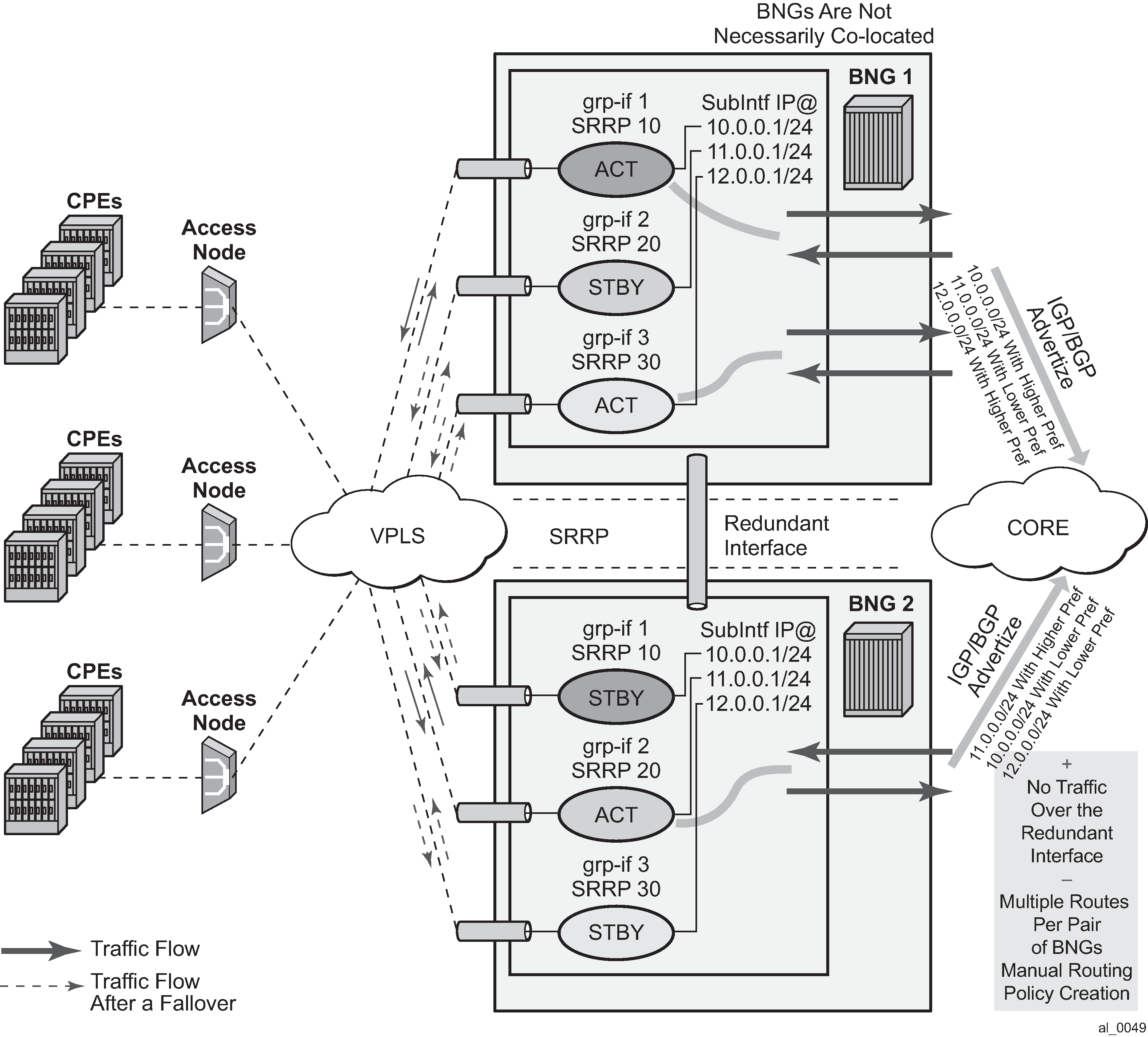With the option B, an IP address pool (or subnet) can be allocated per group of SRRP instances that are in the SRRP master state. The routing decision on the network side is further influenced by the static increase of the metric of the advertised route on the BNG node hosting the active SRRP groups (Figure: Option B – IP subnet per active SRRP group).
This approach would cause greater IP space segmentation in the network core, but at the same time, it would indirectly provide more information about the subscriber whereabouts and therefore minimize or eliminate the shunt traffic during the normal operation. However, if an SRRP switchover occurs, the shunt traffic would ensue. The amount of the shunted traffic would depend on the scale of the failure. From the configuration displayed in Figure: Option B – IP subnet per active SRRP group, it can be concluded that:
There is no shunted traffic.
If any of the SRRP instances transitions out of the SRRP master state, traffic for an entire IP network associated with this failed SRRP instance would be shunted. The reason for this is that the advertised route metric is static and it does not follow changes in SRRP state.
Figure: Option B – IP subnet per active SRRP group